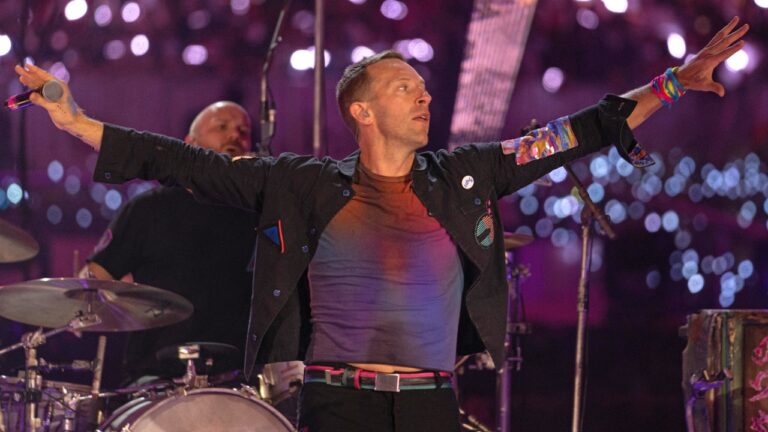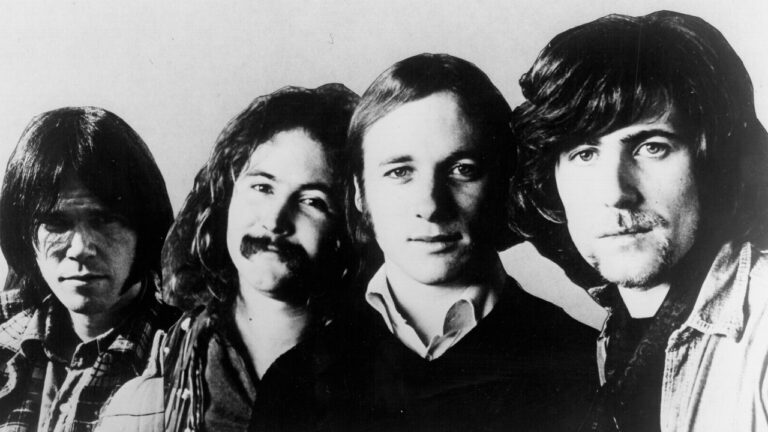Canon RF 85mm f/2 Macro IS STM lens
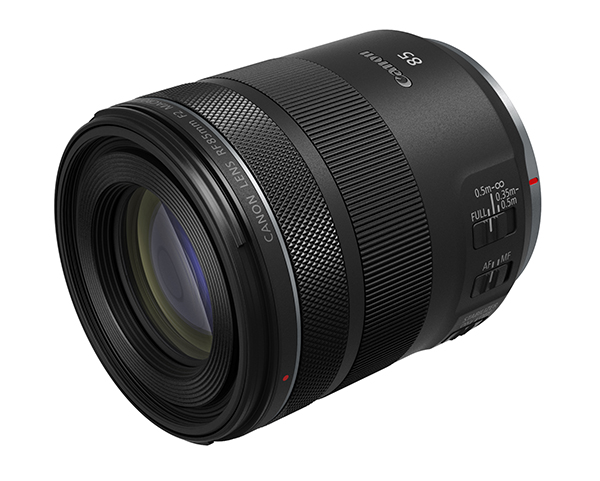
In summary
Superior optical performance, compact size and affordable price tag are the stand-out features of this lens, which makes it an appealing alternative to the larger, heavier and far more pricey L-series alternatives. It’s also a better performer than the previous EF lenses.
The RF 85mm f/2 Macro IS STM lens will appeal to photographers who enjoy shooting close-ups. With its five-stop stabilisation and half-macro focusing capability, this lens is versatile, being able to capture close-ups of subjects’ eyes or, for wedding photographers, hands and wedding rings, including in relatively dim lighting.
Full review
The Canon RF 85mm f/2 Macro IS STM lens arrived in the October 2020, offering half-life-size ‘macro’ capabilities at a minimum focal distance of 35 cm. The 85mm focal length also makes it ideal for portraiture, where the f/2 maximum aperture will provide a shallow depth of field and the STM autofocus motor achieves quick and smooth focus both for stills and video.
Angled view of the RF 85mm f/2 Macro IS STM lens. (Source: Canon.)
The optical design of this lens contains 12 elements in 11 groups and includes one UD (Ultra-low Dispersion) element to suppress chromatic aberrations plus Super Spectra Coating to reduce flare and ghosting. A ‘hybrid’ stabilisation group, engineered to counteract vibrations during close focusing, provides up to five stops of shake correction.
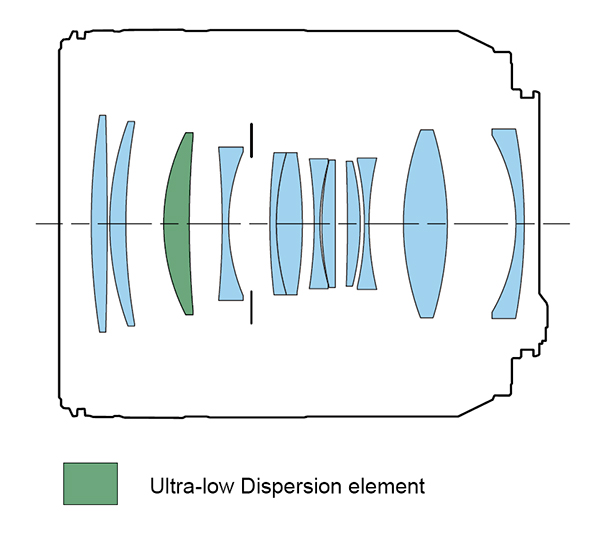
This diagram shows the position of the UD element in the lens design. (Source: Canon.)
The nine-bladed iris diaphragm closes to a circular aperture to ensure attractive bokeh. This lens accepts 67 mm diameter filters. Support is provided for Canon’s Dual-Pixel CMOS AF technology and includes manual focus override.
Autofocusing is handled by a stepping motor that extends the front group – and inner barrel by roughly 22 mm. This creates some audible noise, which could be picked up in the background during video recordings.
The only accessories provided are the usual front and end caps. If you want a lens hood, you’ll have to buy the ET-77 lens hood, an optional extra that will cost you between AU$70 and $100, depending who you buy it from.
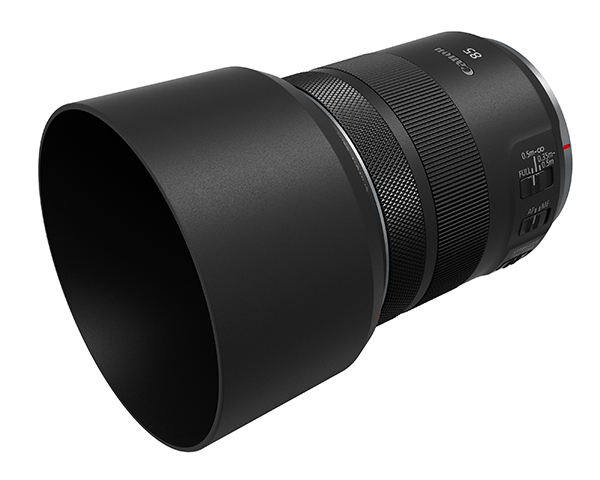
The RF 85mm f/2 Macro IS STM lens shown with the optional lens hood. (Source: Canon.)
Who’s it For?
Naturally, this lens will appeal to photographers who enjoy shooting close-ups. Canon promotes it as a ‘must-have lens for enthusiasts … must-have lens for enthusiasts’. In fact, 85mm lenses have long been popular with portrait photographers and an RF 85mm f/1.2 lens was among the first batch of six lenses announced on Valentine’s Day in 2019 following the launch of the EOS R camera in September 2018.
Two versions of that initial 85mm lens were created, one a standard RF 85mm f/1.2L USM lens and another including DS (Defocus Smoothing) technology that provides smoother defocused bokeh. Both are pretty pricey, with the regular 85mm f/1.2 lens selling for around $3400 and the DS lens for about $100 more. With an RRP of AU$1290 and even lower street prices, the RF 85mm f/2 Macro IS STM is something of a bargain.
With its five-stop stabilisation and half-macro focusing capability, the RF 85mm f/2 Macro IS STM is also more versatile, being able to capture close-ups of subjects’ eyes or, for wedding photographers, hands and wedding rings, including in relatively dim lighting. Details like these are usually a bit beyond the scope of conventional 85mm lenses, even in bright conditions.
It’s also a lot lighter, at half a kilogram, compared with almost 1.2 kg for each of the two faster lenses, as well as roughly two-thirds their length. This makes it more suitable for genres like street and event photography.
But the two f/1.2 lenses have weather-resistant sealing so they’re a better choice for outdoor work in unpredictable weather. They are also supplied with lens hoods and soft carrying pouches, which many potential buyers may require. In contrast, the RF 85mm f/2 Macro is not weather-sealed and only comes with end caps.
The USM (ultrasonic motor) lenses are also quieter during autofocusing, which makes them a slightly better choice for those who wish to shoot video and retain the ‘live’ audio recordings. Focusing speeds are also just a little faster with the USM technology.
Build and Ergonomics
Canon doesn’t specify the materials used in the construction of the RF 85mm f/2 Macro lens, but going on appearance and weight, it’s likely the outer and inner barrels are made from high-quality engineering plastic (polycarbonate) attached to a solid metal mount. Unfortunately, it lacks weather-resistant sealing.
These features made it an ideal partner for the EOS RP camera used for our initial tests. We also found it to be well balanced on the more substantial EOS R6 body, where the ability of its built-in stabilisation to work with the camera’s IBIS was useful when shooting in dimly-lit situations.
The programmable control ring, a characteristic of all RF lenses, is located behind a thin metal ring, 12 mm back from the front of the outer barrel. It’s completely covered in fine hatching to provide a secure and comfortable grip and has soft click-stops to make precise adjustments easy.
Behind it is a 4 mm wide strip and then the 20 mm wide focusing ring, which is covered by a narrowly-ridged grip band. Since focus is driven from the camera, this ring rotates full circle when power is off. When the camera is active, it extends the inner barrel by 5 mm.
The STM (stepping motor) controls autofocus by extending the front group of elements. Focusing can extend the inner barrel by up to 26 mm when the lens is focused manually on close subjects.
The inner barrel will contract completely when focusing on subjects more than about two metres from the camera. The 67 mm filter thread at the front of the inner barrel doesn’t rotate during focusing making this lens usable with angle-critical filters.
Three slider switches are located in the 37 mm long section of the outer barrel that leads in to the lens mount. The uppermost one is a focus limiter slider with three settings: FULL, 0.5m-∞ and 0.35-0.5m. Below it is an AF/MF slider switch, with a stabiliser on/off switch beneath it.
The lens barrel slopes in for 7 mm to meet the gunmetal grey plastic ring surrounding the metal mounting plate. The red index mark for aligning the lens with the camera body is located on this ring. Twelve gold-plated contact points inside the lens mount pass electronic signals between the lens and the camera body.
Performance
The review lens turned in a sterling performance in our Imatest tests, comfortably exceeding expectations for the camera’s sensor in the central region of the frame and meeting expectations near the periphery. Resolution was even higher with CR3.RAW files recorded simultaneously with the JPEGs.
The highest resolution was recorded at f/4.5. However, resolution remained high from f/2.8 through to about f/7.1 where central resolution had begun to decline. Interestingly, we found little difference between centre and edge resolution across the aperture range, as shown in the graph of our test results below. All these results confirm the superior resolution performance of this lens.
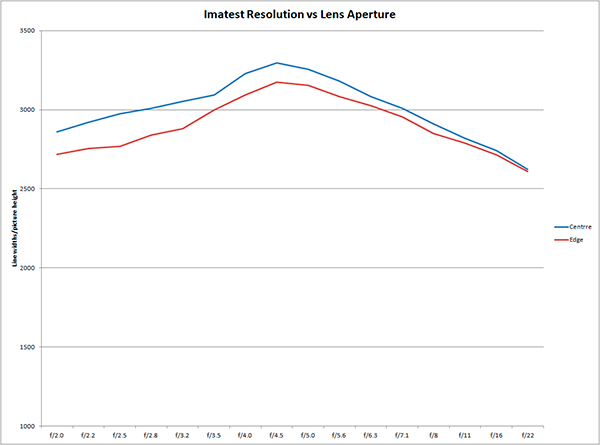
Lateral chromatic aberrations were effectively negligible across the aperture range, as shown in the graph below, which compares results for JPEG files, which are corrected automatically in the camera and CR3.RAW files, which are uncorrected. (Note: the red vertical line separates the ‘negligible’ and ‘low’ CA bands.) These results confirm another superior performance, reinforced by the absence of evidence for coloured fringing in test shots.
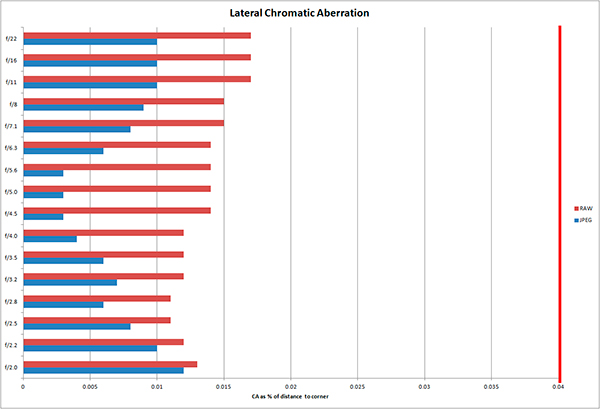
Telephoto lenses with relatively short focal lengths like 85mm tend to produce little in the way of distortions. Rectilinear distortion was limited to very slight pincushion distortion. Also typical for this type of lens is the obvious vignetting that occurs at the maximum aperture, but had vanished by f/3.2 with the review lens. Since both vignetting and distortions are normally corrected by the camera in JPEG files, neither is a major issue.
Autofocusing was problematic. We experienced a fair amount of hunting with the AF mode, especially during close focusing. This could be a one-off issue associated with the review sample (which had to be returned to Canon for repairs before we got it back to complete our tests). Problems like this are, fortunately, very rare but that factor influenced our rating for this feature.
Manual focus over-ride solved most problems but was time-consuming and not really practical when focusing on moving subjects. It was further complicated by the large range of adjustments covered with the focusing ring, which seemed to require a huge degree of rotation to achieve little change in focus.
This has the benefit of enabling very accurate manual focusing but slows the focusing process. Keeping moving subjects in focus for quick shots relied on selecting the correct AF settings. Tracking AF was usually successful in well-lit situations – as long as the focus limiter slider was set correctly.
Ghosting and flare were negligible thanks in a large part to the anti-reflective Super Spectra Coating applied to critical elements. Normally backlit scenes were competently handled and we found no instances of exposure failures.
With wide aperture settings this lens delivered attractive bokeh. Images captured with the f/1.4 aperture showed a very shallow depth of field in parts of the subject that were sharply focused with gradual transitions into out-of-focus areas in the frame. The slight outlining occurred around bright highlights was emphasised as the lens was stopped down.
Conclusion
Please Login or Register to access the Conclusion.
SPECS
Picture angle: 28 degrees 30 minutes
Minimum aperture: f/22
Lens construction: 12 elements in 11 groups (including 1 UD element)
Lens mounts: Canon RF mount
Diaphragm Blades: 9 (circular aperture)
Weather resistance: Dust and moisture resistant
Focus drive: Stepping motor
Stabilisation: Yes, 5 stops
Minimum focus: 35 cm
Maximum magnification: 0.5x
Filter size: 67 mm
Dimensions (Diameter x L): 78 x 90.5 mm
Weight: 500 grams
Standard Accessories: Front and end caps
Distributor: Canon Australia; 1800 021 167
TESTS
Based upon JPEG images captured with the EOS RP camera.
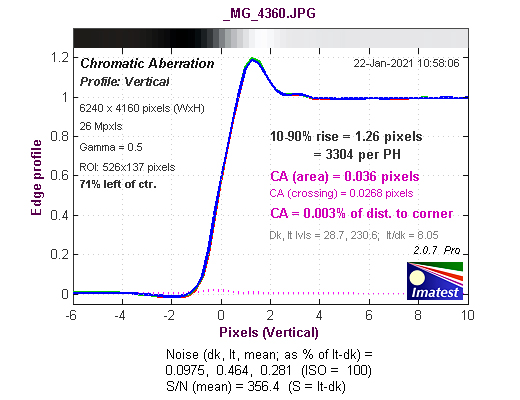
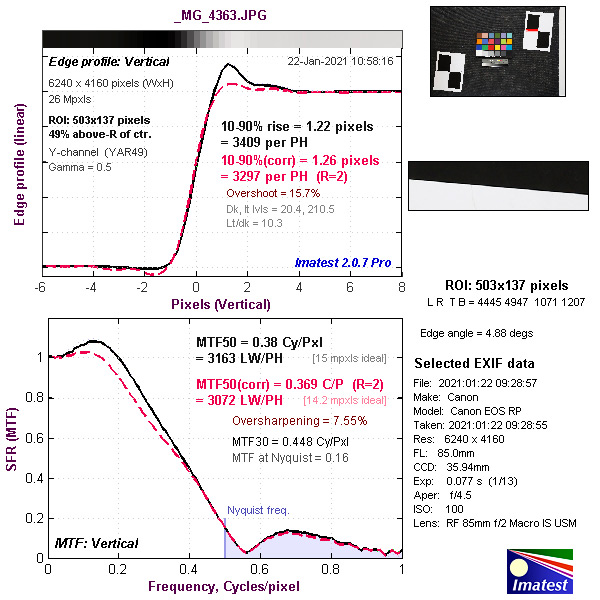

Based upon CR3.RAW files recorded simultaneously with the above JPEGs.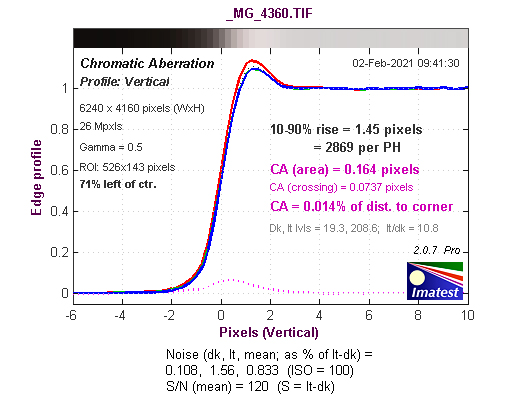
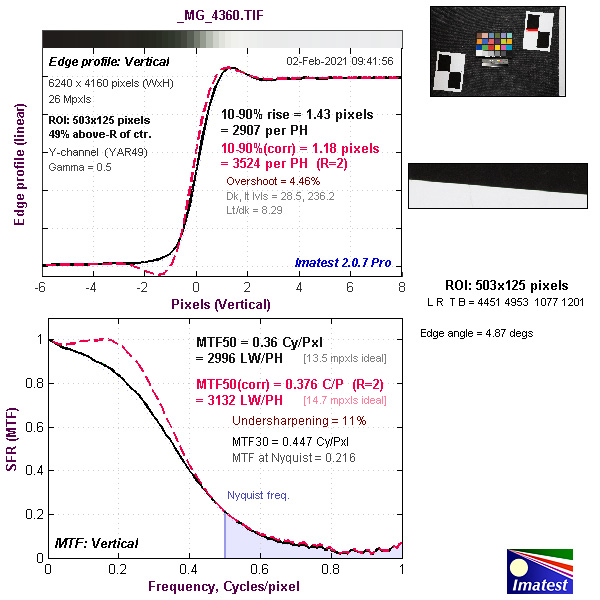
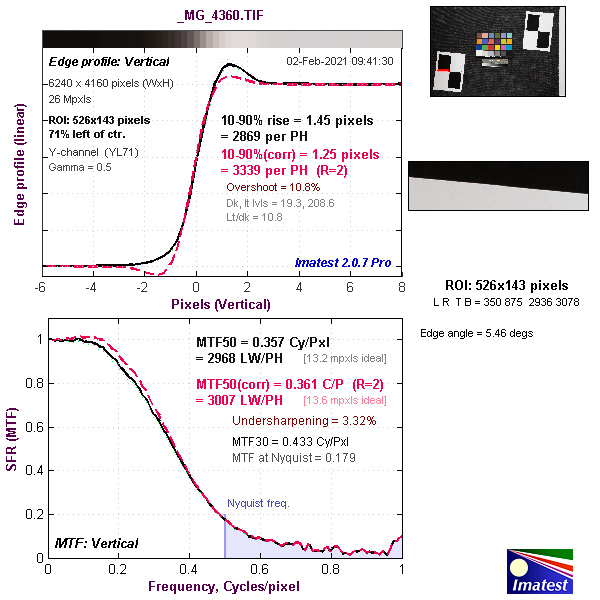
SAMPLES
Recorded with the review lens on the EOS R6 camera body.
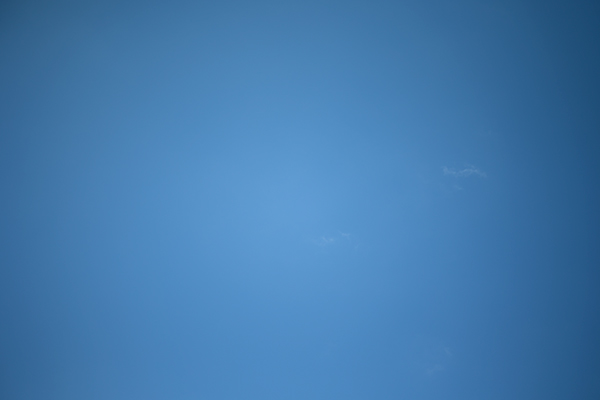
Vignetting at f/2.
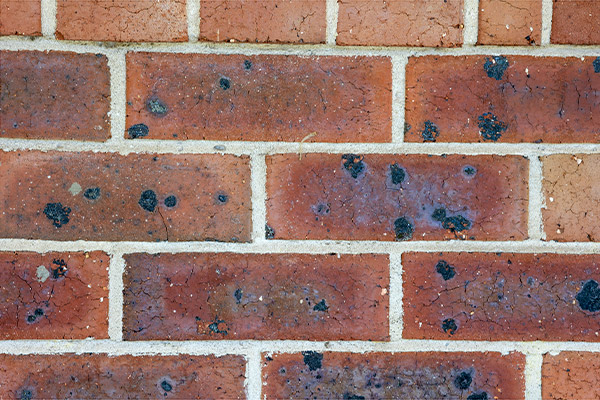
Rectilinear distortion.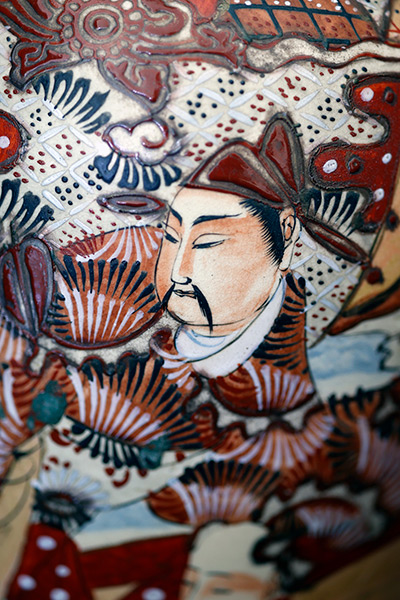
Close-up; ISO 400, 1/15 second at f/2.2.
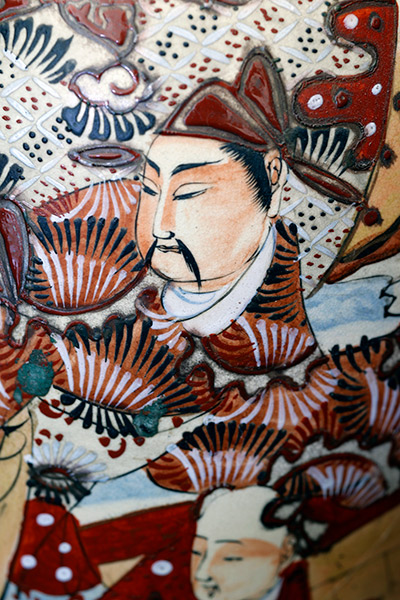
Close-up; ISO 100, 1.3 seconds at f/5.

Close-up; ISO 100, 1/5000 second at f/2.
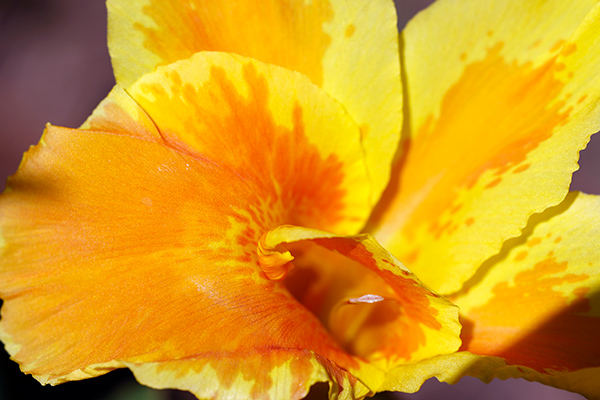
Close-up; ISO 100, 1/320 second at f/7.1.
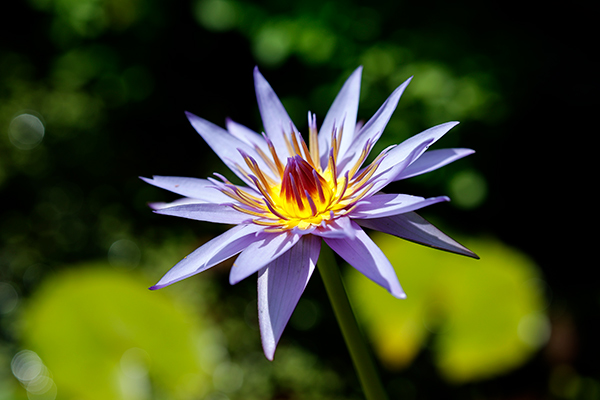
Bokeh; ISO 100, 1/500 second at f/5.
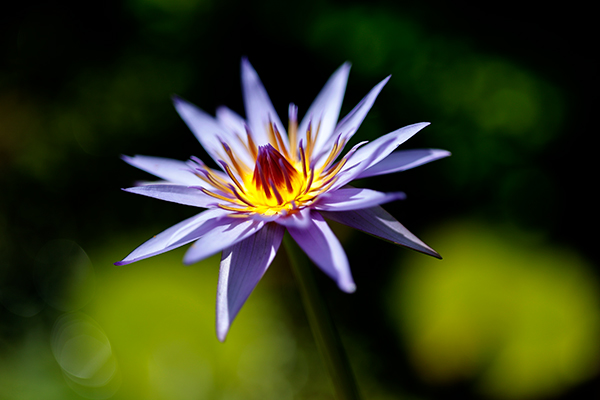
Bokeh; ISO 100, 1/3200 second at f/2.
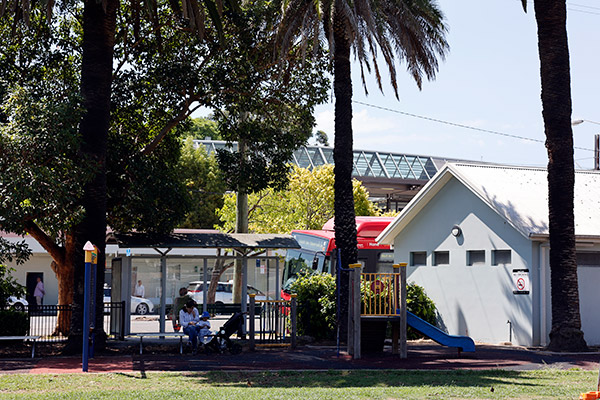
ISO 100, 1/400 second at f/5.6.
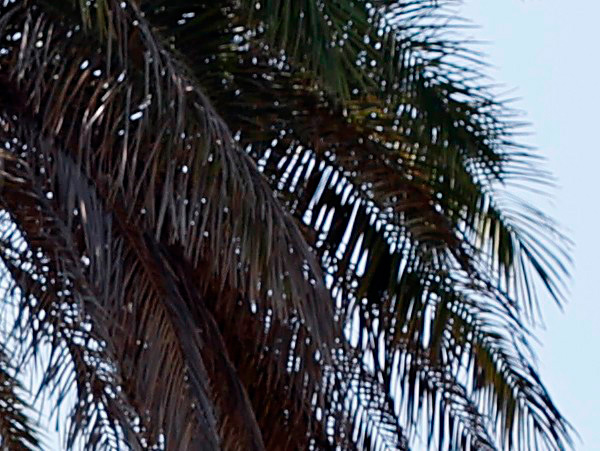
Crop from the above image at 100% magnification showing the absence of coloured fringing.
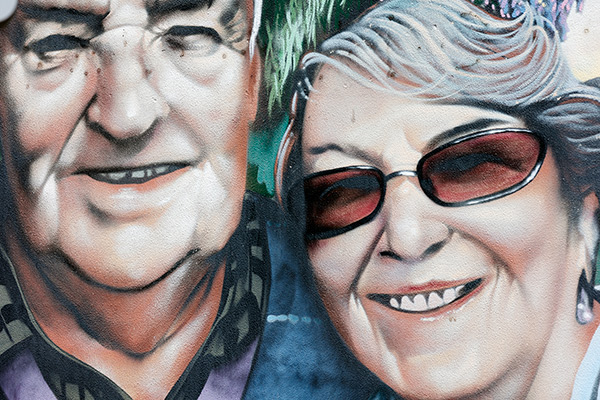
ISO 100, 1/800 second at f/5.6

ISO 100, 1/100 second at f/8.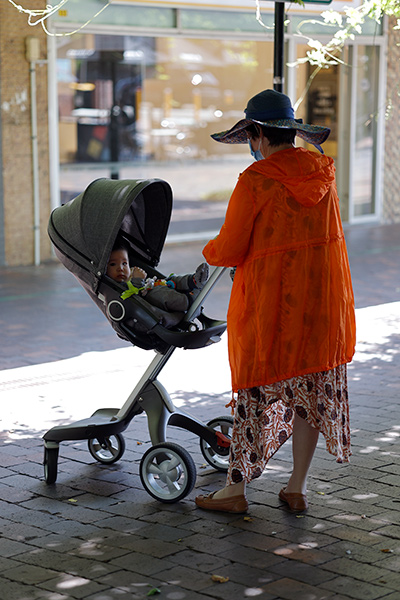
Backlit subject; ISO 50, 1/100 second at f/2.8.

ISO 100, 1/500 second at f/5.6.

ISO 50, 1/100 second at f/2.5.

Tracking AF; ISO 50, 1/200 second at f/4.

ISO 50, 1/60 second at f/2.
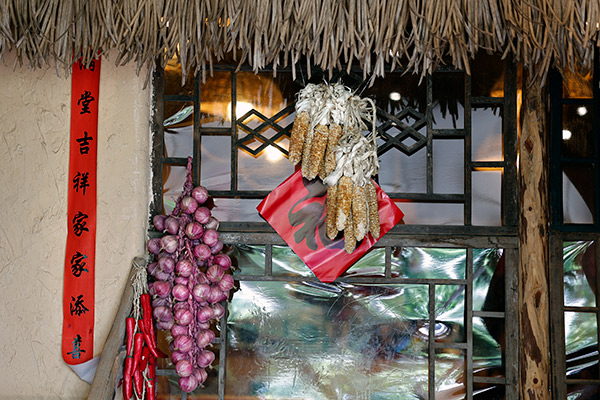
ISO 100, 1/20 second at f/2.5.

ISO 50, 1/320 second at f/5.
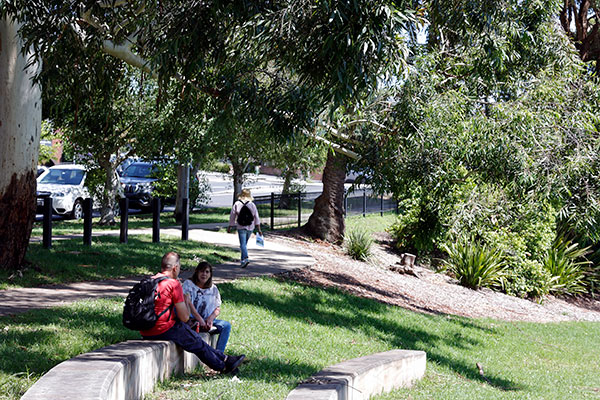
ISO 50, 1/40 second at f/10.
Rating
RRP: AU$1290; US$600
- Build: 8.8
- Handling: 8.9
- Image quality: 9.0
- Autofocusing: 8.2
- Versatility: 8.9

